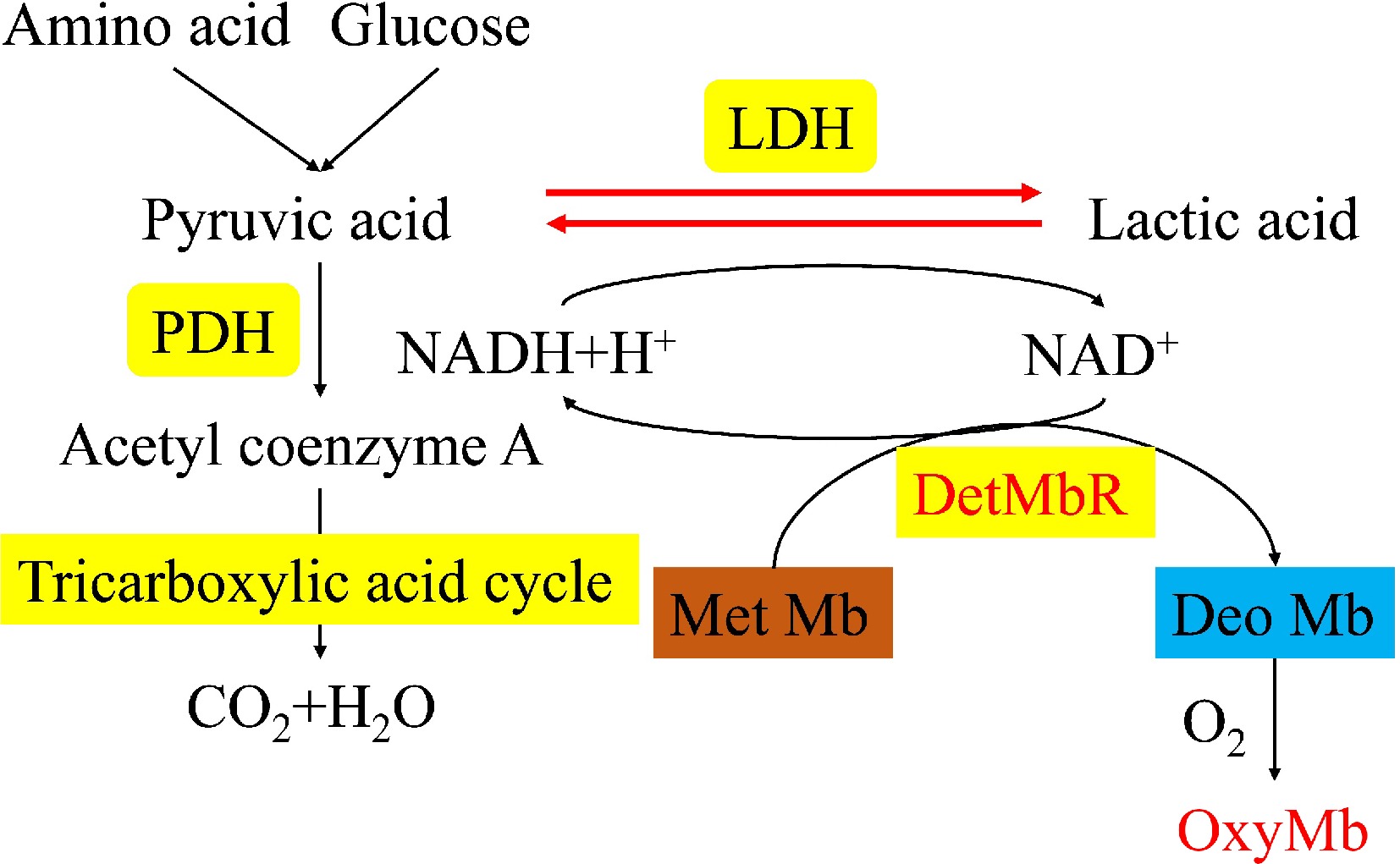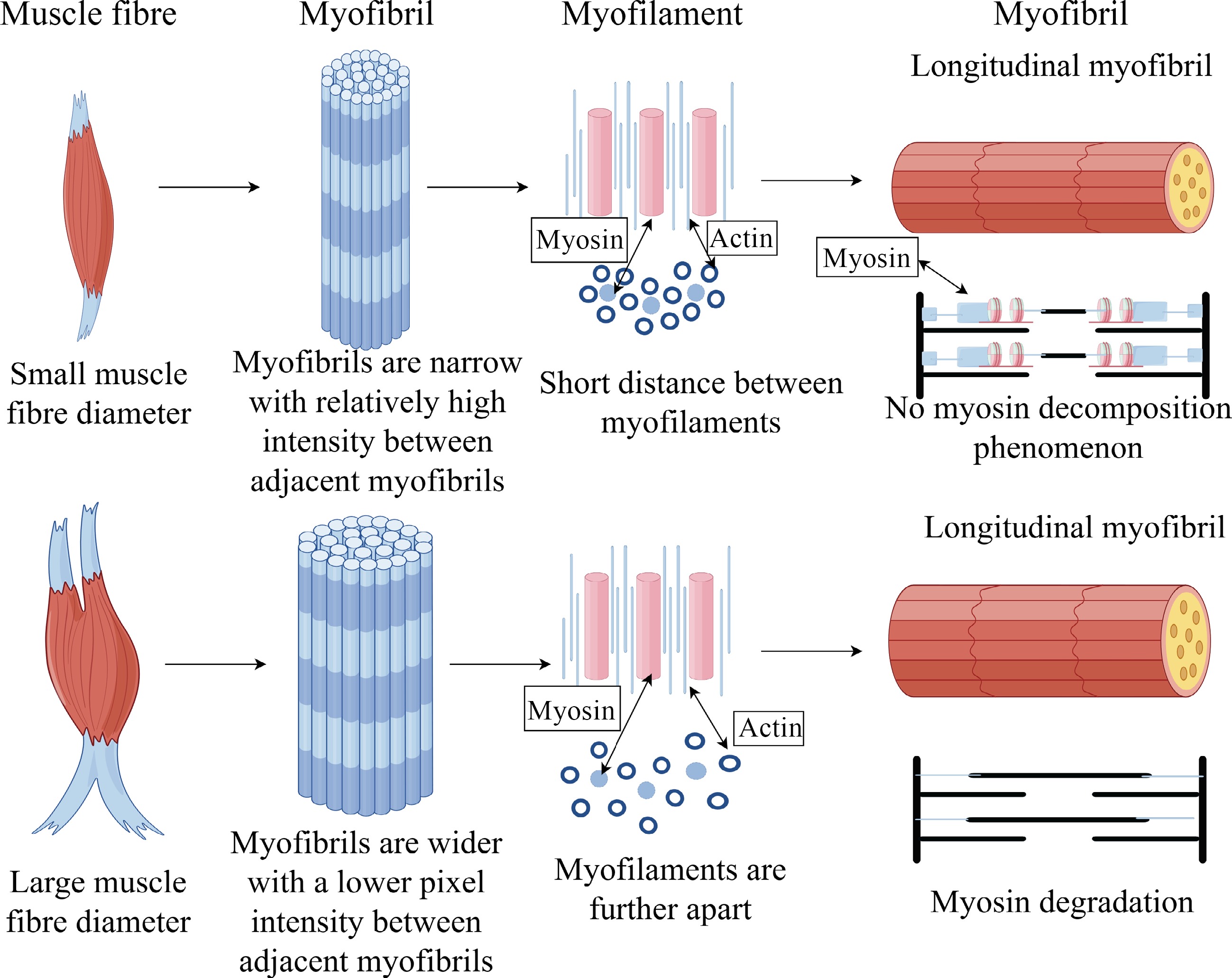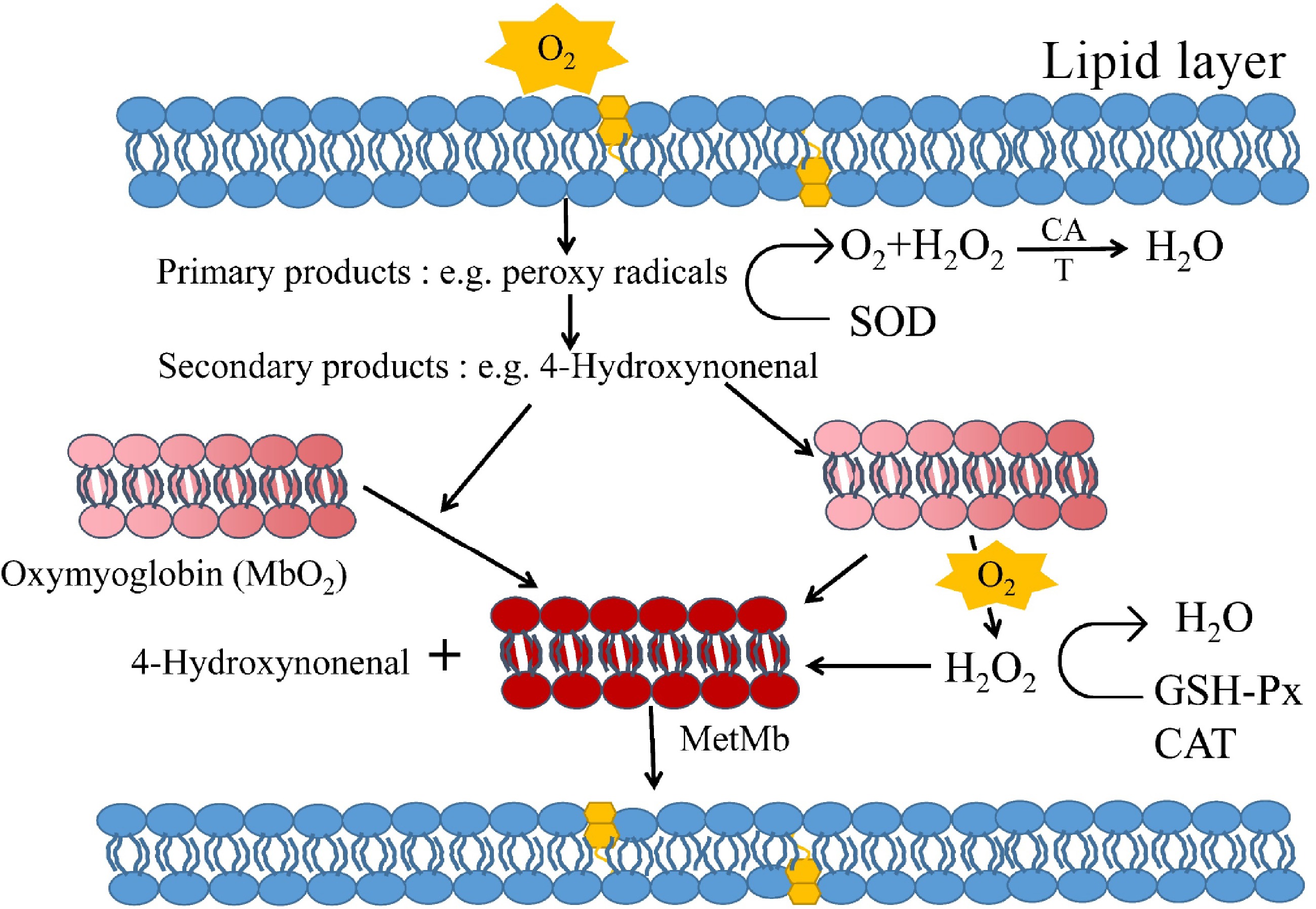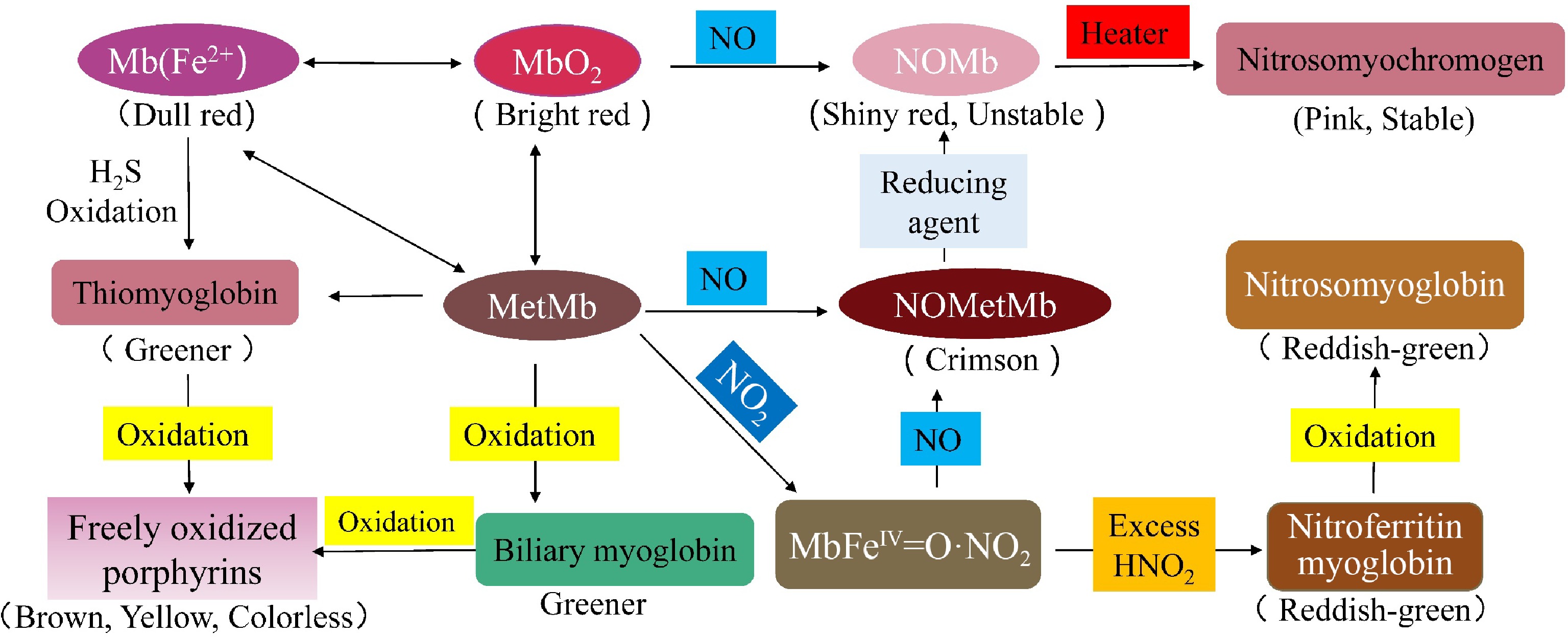-

Figure 1.
Structural changes of myoglobin.
-

Figure 2.
Reaction mechanism of lactate dehydrogenase and NADH-dependent Mb reductase on meat color change.
-

Figure 3.
Effect of transverse and longitudinal microstructure difference of muscle fibers on achromaticity.
-

Figure 4.
Potential oxidative interaction between lipids and myoglobin.
-

Figure 5.
Structural change pathway of myoglobin in cured meat.
-
Factor Influence Refs Species Mountain animals and marine mammals have high myoglobin content [16] Age With the increase of age, the content of myoglobin increased and the meat color became darker [17] Motion Highly athletic areas with high oxygen consumption, high myoglobin content and dark meat color [18,19] Feeding method Antioxidants such as polyphenols are added to the feed to help increase the redness value [20] Pre-slaughter stress Redness (a*) values were lower and yellowness (b*) values were elevated in pork with pre-slaughter stress than in the control group [21] Sexuality The pH value of female lambs at 4 h after death was significantly lower than that of male lambs, with higher tenderness and more stable color [21] Table 1.
Effect of raw meat quality on myoglobin.
Figures
(5)
Tables
(1)